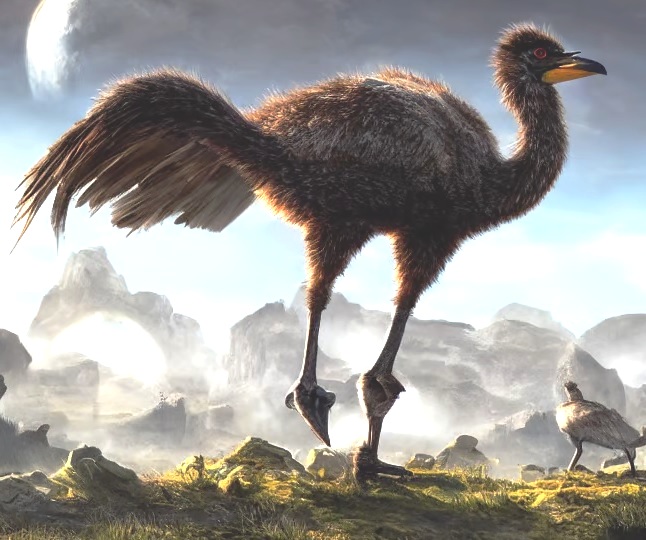Difference between revisions of "Emu"
Tao alexis (talk | contribs) |
Tao alexis (talk | contribs) |
||
| Line 1: | Line 1: | ||
{{Bestiarychart | {{Bestiarychart | ||
| name = Emu | | name = Emu | ||
| − | | species = | + | | species = avian |
| noapp = 4–16 | | noapp = 4–16 | ||
| behaviour = herd | | behaviour = herd | ||
| Line 11: | Line 11: | ||
| HD = 1 | | HD = 1 | ||
| AP = 5 | | AP = 5 | ||
| + | | stride = 17 | ||
| THAC0 = 20 | | THAC0 = 20 | ||
| hpdie = d6 | | hpdie = d6 | ||
| − | | attack = kick | + | | attack = kick & peck |
| − | | dmg = 1–8 | + | | dmg = 1–8 & 1–4 |
| special = back kick | | special = back kick | ||
}} | }} | ||
| + | |||
| + | The '''emu''' is a large flightless bird, which may stand as tall as 6 ft. 3 in., and weigh up to 132 lbs. — though they are more commonly smaller. While very common in unknown Australia, they have been seen throughout southeast Asia and as far west as [[Sultanate of Makran|Makran]]. They can travel great distances and are able to go for weeks without eating. They drink infrequently, but take in copious amounts of water when the opportunity arises. | ||
| + | |||
| + | They are prey for [[Megalania Lizard|megalania]], the [[Thylacine|thylacine]] and [[Dingo|dingos]], who hunt emu in packs. | ||
| + | |||
| + | Breeding takes place in November and December in the northern hemisphere, or May and June in the south. Fighting among females for a mate is common. The emu becomes very aggressive at this time towards outsiders. The female lays 5-7 eggs, which are cared for by the male, who does not abandon the eggs until they hatch, starving himself and growing more aggressive; over the eight-week incubation period, he will lose a third of his weight. The chicks, when born, weigh about a pound, and require seven months to become fully grown. | ||
[[File:Emu.jpg|left|350px]] | [[File:Emu.jpg|left|350px]] | ||
See [[Bestiary]] | See [[Bestiary]] | ||
Revision as of 17:37, 29 September 2020
| Species | avian |
| No. Appearing | 4–16 |
| Behaviour | herd |
| Range | desert, savanna |
| Size | 5 ft. 7 in. tall |
| Weight | 86 lbs. |
| Intelligence | 1 |
| Armour Class | 7 |
| Hit Dice | 1 |
| Action Points | 5 |
| Max. Stride | 17 |
| THAC0 | 20 |
| Hp/Die | d6 |
| Attack Forms | kick & peck |
| Damage | 1–8 & 1–4 |
| Special Attacks | back kick |
The emu is a large flightless bird, which may stand as tall as 6 ft. 3 in., and weigh up to 132 lbs. — though they are more commonly smaller. While very common in unknown Australia, they have been seen throughout southeast Asia and as far west as Makran. They can travel great distances and are able to go for weeks without eating. They drink infrequently, but take in copious amounts of water when the opportunity arises.
They are prey for megalania, the thylacine and dingos, who hunt emu in packs.
Breeding takes place in November and December in the northern hemisphere, or May and June in the south. Fighting among females for a mate is common. The emu becomes very aggressive at this time towards outsiders. The female lays 5-7 eggs, which are cared for by the male, who does not abandon the eggs until they hatch, starving himself and growing more aggressive; over the eight-week incubation period, he will lose a third of his weight. The chicks, when born, weigh about a pound, and require seven months to become fully grown.
See Bestiary
